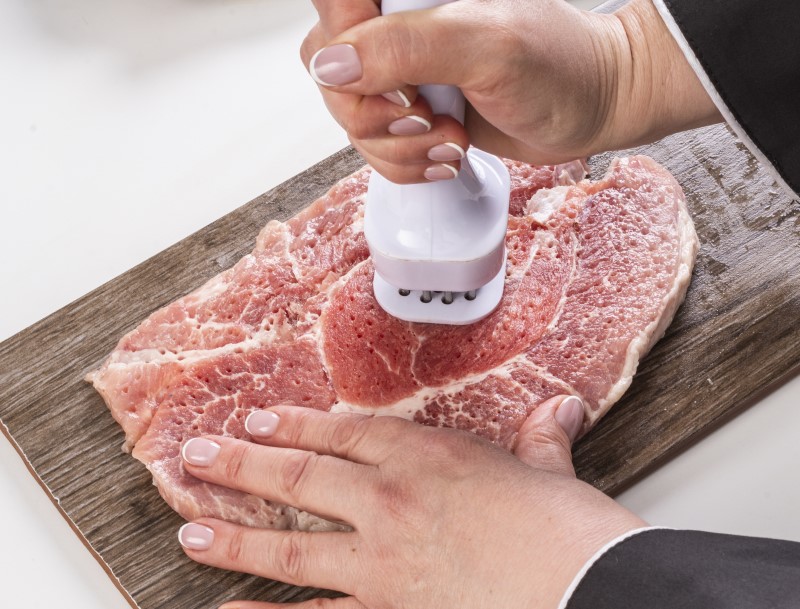Meat Tenderization Techniques: Role of Vacuum Tumblers and Choppers

In commercial meat processing, tenderization is the key to delivering quality cuts and taste. The flavourful, juicy and easy-to-cook meat is all based on how well the meat is tenderized. While traditional tenderizing methods like marinating and mechanical pounding still are considered an important step in the kitchen, the modern processing plant now relies heavily on the advanced machinery. The automated equipment for meat tenderization enhances the meat texture, adsorption and shelf life. Among the most effective tools are vacuum tumblers and meat choppers, each playing a crucial role in the process.
Enhance Absorption and Texture with Vacuum Tumblers
Vacuum tumblers are widely used in meat processing plants to marinate and tenderise large quantities of meat. These machines operate under low-pressure environments, creating a vacuum inside the drum. When the meat is tumbled under vacuum, it not only expands, allowing brine, marinades and seasoning to penetrate into the meat fibres, but also makes it easy enough to cook with freshness.
This method of meat tenderising improves flavour retention and moisture levels while breaking down protein structures gently. Unlike traditional soaking methods that take hours or even days, vacuum tumblers can achieve deep marination and softening in a fraction of the time. This method improves the speed of production, consistency and quality for large batches in commercial kitchens and food production operations.
Vacuum tumbling also helps reduce purge loss by locking in moisture, which improves the appearance and shelf life of meat. This makes it more appealing to consumers and reduces waste.
Keeping the process of meat tenderisation significant for commercial kitchens, M&M Equipment have some amazing vacuum tumblers in their inventory. The best are listed below with specs.
Meat Choppers; Mechanical Tenderization at it Best
Meat choppers, including bowl choppers and cutter mixers, are used to reduce meat into finer textures and break down tough connective tissues. While their primary purpose is often emulsification or preparation for sausages and patties, they also play an important role in tenderisation.
High-speed rotating blades finely mince meat while maintaining temperature control to prevent heat buildup. This controlled chopping breaks down muscle, fibres and collagen. This process makes the meat a softer and more uniform product. For processed meat products like hot dogs, meatballs or deli-style cuts, this kind of tenderisation is essential for texture and mouthfeel.
Modern bowl choppers often come with a vacuum function that enhances the protein and improves the binding of meat. This is another vital element of tenderisation, and meat mixers do an excellent job of it.
M&M Equipment have some amazing bowl chopper and mixer that can be used in the meat processing plants for better quality. The new and never installed bowl chopper and mixers are listed below.
- TALSA K205spp POWER PLUS Bowl Chopper
- SEYDELMANN K-504 AC-8 VAK Bowl Chopper
- Daniels DMX 500 Vacuum Quad Mixer
- DANIELS DMX 100 Mixer
Combined Impact on Production Quality
In high-volume food production, vacuum tumblers and meat choppers work hard in hands to deliver products that meet both consumer expectations and regulatory standards. Tumblers improve flavour penetration and moisture content, while choppers ensure even distribution and breakdown of meat structure. By integrating these machines into their processing lines, commercial kitchens and meat processors can streamline production, reduce labour and improve consistency.
Tender meat is no longer just about cooking technique, and it starts with preparation. Whether it’s destined for a fine dining plate or a grab-and-go deli sandwich, tender meat is profitable.
